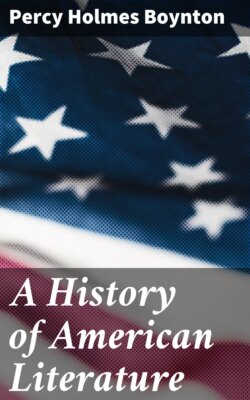Читать книгу A History of American Literature - Percy Holmes Boynton - Страница 25
На сайте Литреса книга снята с продажи.
TOPICS AND PROBLEMS
ОглавлениеTable of Contents
In a survey course enough material is presented for Hopkinson, Trumbull, Dwight, and Barlow in the collections mentioned in the Book List for this chapter. The only reprint available of Lewis’s interesting “Journey from Patapsco to Annapolis” is in “American Poetry” (P. H. Boynton, editor), pp. 24–29. These poems are chiefly significant for the combination of English form and American subject matter.
Compare Trumbull’s comments on the education of girls with the corresponding passage by Mrs. Malaprop, in Sheridan’s “The Rivals,” and with Fitz-Greene Halleck’s comments on the education of Fanny, in the poem of that name (see “American Poetry,” pp. 127, 128, and 155, 156).
Compare Dwight’s “Farmer’s Advice to the Villagers,” “Greenfield Hill,” Pt. VI, with Benjamin Franklin’s “The Way to Wealth.”
Compare the nationalistic note in the seventh and ninth books of Barlow’s “Vision of Columbus” with that in Timrod’s “Ethnogenesis” and that in Moody’s “Ode in Time of Hesitation.” Do the dates of the three poems suggest a progressive change? (See “American Poetry,” pp. 123, 349, and 577.)
Read Freneau’s more bitter war satires in comparison with Jonathan Odell’s “Congratulation” and “The American Times,” for which see “American Poetry,” pp. 78–83.
Read Freneau’s more jovial war satires in comparison with Whittier’s “Letter from a Missionary of the Methodist Episcopal Church” (“American Poetry,” p. 255); John R. Thompson’s “On to Richmond” (“American Poetry,” p. 325); Edmund C. Stedman’s “How Old Brown took Harper’s Ferry” (“American Poetry,” p. 317); and Lowell’s “Biglow Papers.”
Read Freneau’s “Pictures of Columbus” in comparison with Lowell’s “Columbus” (“American Poetry,” p. 382); Lanier’s “Sonnets on Columbus” (“American Poetry,” p. 458); and Joaquin Miller’s “Columbus” (“American Poetry,” p. 564).
“The Progress of Balloons” derives its title from a whole series of preceding “progress” poems. Cite others and compare them as you can.
With reference to Freneau’s diction in nature passages as compared with that of Ames and Lewis in the text, read Wordsworth’s essay on “Poetic Diction” prefatory to the lyrical ballads of 1798, with which Freneau agreed and which he anticipated in certain of his poems.
